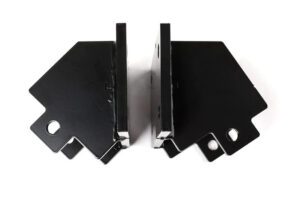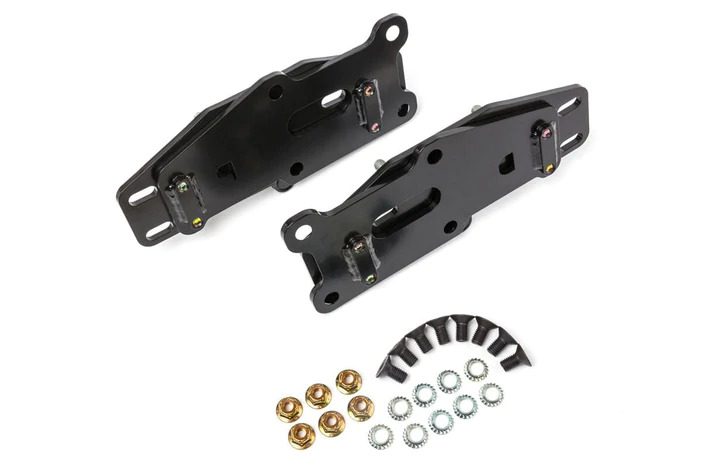What is a Motor Mount?
Motor mounts, also referred to as engine mounts, serve as the connection point between the engine and the chassis. Usually made of a mixture of metal and rubber, the mount supports and secures against vibrations that can be harmful to the engine. The metal is there to stabilize and secure while the rubber protects. There are four different types of motor mounts:
Solid rubber or transmission mounts
This type of engine mount is very common in both cars and trucks. The solid rubber bolts to the engine transmission and chassis with steel-backed plates. This combination of metal and rubber helps to eliminate harmful jolts, and it can potentially elongate the engine’s life.
Hydraulic
These types of mounts are filled with a gel or liquid that helps to dampen engine vibrations before they reach the chassis. These are often used in vehicles or industries in which noise needs to be kept at a low level, such as the automotive, marine, and construction industries.
Metal
 Metal is all about creating strong, secure connections between the engine and the chassis. The clash of metal on metal with these types of mounts creates a lot of noise, so there are some scenarios in which they would not work well.
Metal is all about creating strong, secure connections between the engine and the chassis. The clash of metal on metal with these types of mounts creates a lot of noise, so there are some scenarios in which they would not work well.
Electronic or Active
These types of mounts are used to reduce noise and vibrations based on how fast the vehicle is going and how much of a load it is carrying. The mount monitors this feedback and the vibrations will be controlled with a vacuum actuator or a counter shake mechanism.
Polyurethane (PU)
If you are not interested in a rubber mount and want something that will likely last longer, this is the option for you. You do get what you pay for, so these will cost more than the other types of engine mounts. The benefits of polyurethane mounts are that they can help create a higher level of performance on the road. However, there are also cons to this type of system. Polyurethane is not as resistant to heat, and it also does not bond as well to metal as other types of mounts do.
If you’re wondering how many motor mounts does a car have, the answer is usually three or four. These motor mounts work together to support the engine as well as the transmission. It is important to know how many mounts are in your car so you can more easily identify which one or ones are the issue.
As important as they are to the functionality of your car, it is important to know that motor mounts can be easily replaced when needed. How do you know when your motor mount needs to be replaced? There are several signals your car will send you to let you know you need to take a look at all of your mounts to see which needs to be replaced. Among those signals are:
Heavy Vibrations
While it might seem fun to copy the low rider, the reality is that heavy vibrations in a car represent problems with at least one of your motor mounts.
If you ever listened to Car Talk on public radio, one of the most common complaints people had were noises they couldn’t identify. Banging, clanking, and rattling all were described with no clear answers as to what was causing these problems. Unfortunately, these problems often point to a problem with the motor mounts.
Engine Movement
This is the most obvious symptom of motor mount issues. If you turn a corner and hear sounds like things are moving around in your trunk, only nothing is in your trunk, this could be your engine actually moving around. This most definitely necessitates a replacement of your motor mount.
Use Your Eyes
If you pop the hood and watch the engine while someone else revs the engine, you can easily see if there is a problem. If the engine bounces out of the bay, you need a new mount.
When your engine is telling you that it is time to take a look at your engine mounts, you do have the option of trying to make the fix yourself. There are plenty of online instruction guides on how to accomplish this. The parts themselves are fairly affordable and easy to find. There are two main obstacles in the way of DIY motor mount replacement. The first is that the engine needs to remain supported while the mounts are being changed out. The other issue is that especially in vans, access to the various motor mounts can be quite difficult. Knowing your motor mount’s location is important. Accessibility to the mounts, or lack thereof, can also explain why labor costs are often higher for this type of work.
Motor or engine mounts are essential parts of our vehicles that we perhaps do not think about as often as we should. Be sure you take care of these engine and transmission protectors.

